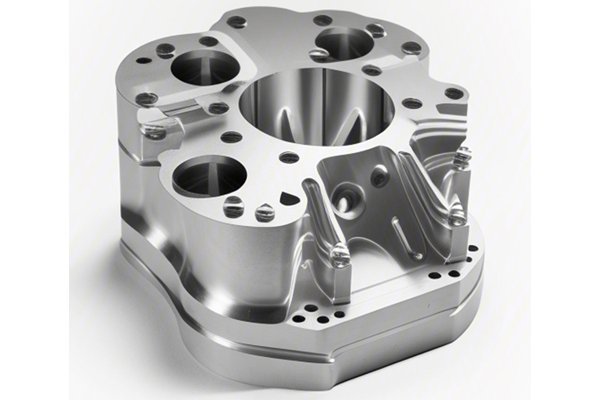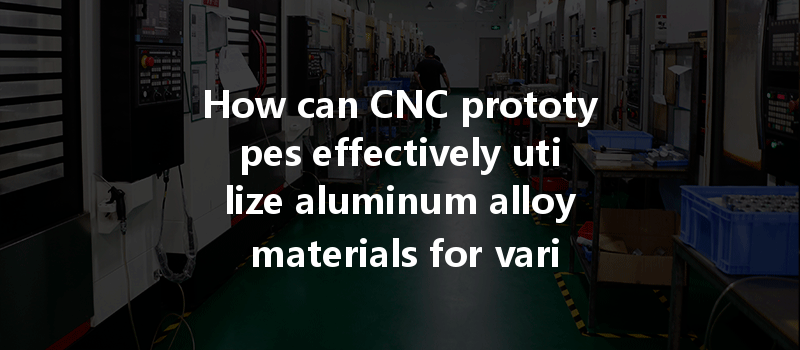Did you know that aluminum is one of the most recycled materials in the world, with approximately 75% of all aluminum ever produced still in use today? This impressive statistic speaks volumes about the versatility and sustainability of aluminum. In the world of CNC (Computer Numerical Control) machining, aluminum alloy materials are not only prevalent but are also hailed for their impressive strength-to-weight ratio, corrosion resistance, and excellent machinability. But how can CNC prototypes effectively harness the potential of aluminum alloy materials? This blog will delve into the intricacies of CNC machining with aluminum alloys, exploring their characteristics, applications, and the steps necessary to create effective prototypes.
Understanding Aluminum Alloys in CNC Machining
What Are Aluminum Alloys?
Aluminum alloys are categorized into two primary families: wrought and cast. Wrought alloys are those that have been mechanically worked into shapes like sheets, rods, or other forms through processes such as extrusion or rolling. On the other hand, cast alloys have been melted and poured into molds. Understanding the distinct properties of these families is crucial when selecting aluminum alloys for CNC machining.
Common Types of Aluminum Alloys
There are many different types of aluminum alloys, but the most commonly used in CNC machining include:

Properties of Aluminum Alloys
Aluminum alloys offer several key properties that can be beneficial in design and manufacturing:
The Role of CNC Prototyping
What Is CNC Prototyping?
CNC prototyping involves using CNC machines to create precise and functional prototypes of parts or products from digital designs. This process allows engineers and designers to test their designs, identify flaws, and make necessary adjustments before mass production. Prototyping can save time, reduce costs, and lead to higher-quality final products.
Why Choose Aluminum for CNC Prototypes?
Steps for CNC Prototyping with Aluminum Alloys

Best Practices for CNC Machining with Aluminum Alloys
Optimize Tool Selection
Choosing the right cutting tools for machining aluminum is vital. High-speed steel (HSS) and carbide tools are commonly used due to their durability and precision. Additionally, use sharp tools to minimize friction and heat build-up, which can affect the final part quality.
Coolant Utilization
Using coolant during the machining process can significantly enhance the machining of aluminum alloys. Coolants help reduce heat generation, improve surface finish, and prolong tool life by minimizing wear and tear.
Adjust Feed Rates and Speeds
The feed rate and spindle speed must be accurately calibrated for aluminum machining. Generally, a higher cutting speed is preferable, but it must be balanced with the feed rate to ensure optimal material removal without compromising part integrity.
Dimension Tolerance Considerations
For critical applications, ensure respect tolerance specifications outlined in the design phase. This is especially important when machining fits for assembled parts, where precise dimensions are crucial.
Surface Finish Techniques
Improving surface finish is integral to the functionality and appearance of machined parts. Consider secondary processes like anodizing, polishing, or applying protective coatings that not only enhance aesthetics but also boost corrosion resistance.
Applications of CNC Prototyping with Aluminum Alloys
The versatility of aluminum alloys makes them suitable for a wide range of applications across various industries, including:
Challenges and Solutions in CNC Machining of Aluminum
Common Challenges
Solutions for Effective Machining
CNC prototyping using aluminum alloys is a powerful approach that leverages the best characteristics of aluminum while allowing for precision, customization, and efficiency in production. By following the best practices and understanding the properties of aluminum alloys, manufacturers can take advantage of their benefits across various applications—from aerospace to medical devices.
In this blog, we explored the properties of aluminum alloys, the CNC prototyping process, and notable applications. We also discussed how to navigate challenges in machining aluminum effectively, ensuring that your prototypes meet the desired specifications and functions.
As industries push for innovation and efficiency, the role of CNC prototyping and aluminum alloys will only become more essential. This blog serves as a call to action for engineers and manufacturers. The world is moving toward smarter manufacturing solutions, and aluminum alloys, with the aid of CNC technology, are at the forefront. Adopting these techniques not only promotes sustainability but also enhances product quality, making it worthy of consideration for those involved in design and manufacturing. Reflect on the techniques covered here and consider how they can be integrated into your practices for future success.




